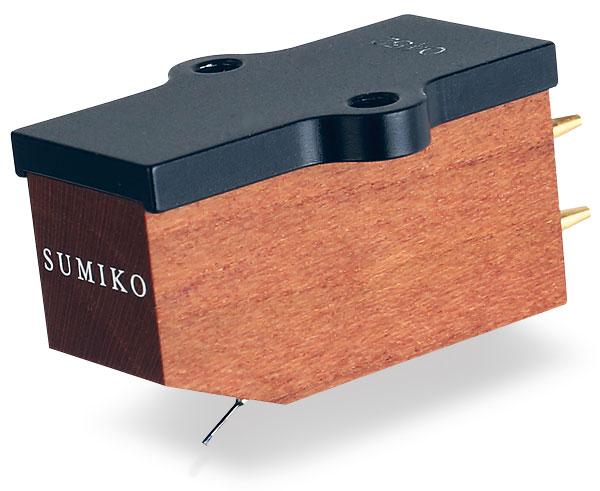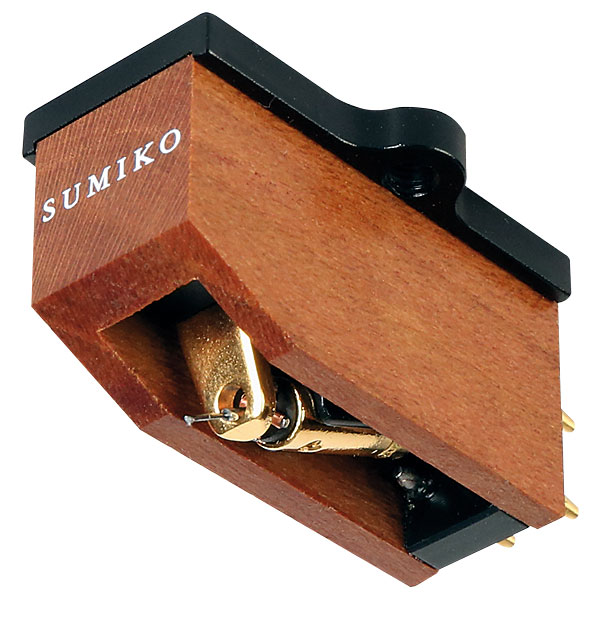Sumiko Celebration 40 Cartridge

 Launched to mark Sumiko's 40th, this latest version of the 'Celebration' moving-coil takes its cues from the mkII Pearwood, albeit with Plumwood to invoke a unique hue...
Launched to mark Sumiko's 40th, this latest version of the 'Celebration' moving-coil takes its cues from the mkII Pearwood, albeit with Plumwood to invoke a unique hue...
This celebratory model, marking 40 years, recalls a bygone time, its perfectly apt wooden box and body inadvertently honouring a specific Japanese MC cartridge with the greatest claim to establishing the genre in the West: the original Koetsu [HFN Nov '80]. What doesn't evoke the 1980s is the £3199 price tag, although this is perhaps not so forbidding when we can list a dozen £10,000-plus cartridges, aimed at those who quaff Petrus at every meal…
The made-in-Japan Celebration 40 is positioned one-from-the-top in Sumiko's five-strong family of 'Reference' MCs, and the company also offers seven MM models from £75-£625. Above the Celebration 40 is the £4999 Palo Santos Presentation [HFN Jul '10] which looks very similar save for its darker wood body.
Audiophile Carpentry
And it's all about the wood, though there are other differences to account for the £1800 disparity. The Celebration 40 is fitted with the same 75x2.5µm Microridge stylus as used in the flagship, mounted on a long-grain boron cantilever, while the milled Teflon back-plate, motor and anti-resonant machined aluminium cradle are housed inside a plumwood body, instead of the Palo Santos' rosewood. The specification hints at differences in the coil windings, magnet and suspension with its compliance notionally higher than the dearer MC's. Weight is reduced too – 7g versus 8.3g.

Sumiko attributes great sonic and tonal value to the choice of wood itself, though this is not a can of (wood)worms I'm tempted to open at this point in the review! That said, the construction is excellent, if necessarily less rugged than the bomb-proof build quality of the top-of-the range bodies employed by Ortofon [HFN Oct '19] or TechDAS [HFN Sep '14], for example. Also, the Celebration 40 is of the absolutely-flat-top school of design, eschewing the recent trend for three-point contact [HFN Feb '22]. Maybe the jury should remain out on that fashion because in no way was the Celebration 40 anything less than securely mounted in two different arms and three different headshells.
Mix 'n Match
Why the toying with headshells? It was all about optimising the effective mass, as I have one deck with a fixed headshell tonearm and one with removable shells. As per PM's Lab Report, I was careful to use one with high-ish effective mass, confirming the final choice with a brace of test LPs.
Despite my ever-increasing, age-related anxiety when faced with other people's costly cartridges, especially those with long, exposed cantilevers and (possibly uniquely in this case) the absence of a stylus guard, I was mildly relieved to see the Sumiko's body sporting a severe frontal cutaway. At least I could see everything without having to crane my neck downwards, and it proved a godsend when setting the overhang, but I still wished for a stylus guard while securing the '40 into position.
At 10.2mm wide, its narrower-than-usual body is reminiscent of the old Supex SD-900 and Fidelity Research FR1 [HFN Aug '80] cartridge shapes, with parallel sides ideal for positioning, especially with overhang gauges or templates imprinted with a grid. Also, the set up instructions proved to be textbook perfect – the 2g tracking force was ideal as was the recommended 100ohm loading.

This was, by the way, easily determined thanks to the Audio Research Reference Phono 3SE because I was able to try various loads via remote from the hot seat. Aside from the anticipated changes in output, the sound was intuitively 'right' at 100ohm, which is good news as there's no need to mate the Sumiko Celebration 40 with an exotic phono preamp boasting uncommon input impedances.
![]() Knock On Wood
Knock On Wood
It was, like that wonderful quote from Yogi Berra, 'déjà vu all over again'. I am embarrassed to admit that the Celebration 40, whether deliberately or not on the part of the designers, rendered me misty-eyed and sentimental. I am just old enough to recall the arrival of crazy-money MC cartridges and was an early devotee of the Koetsu Rosewood, one of which I still own. This MC, then, celebrates not just Sumiko's history, but that of Far Eastern cartridges and their impact on the rest of the world.
























































